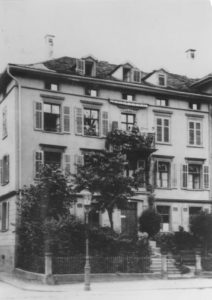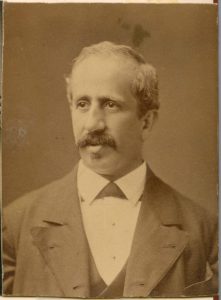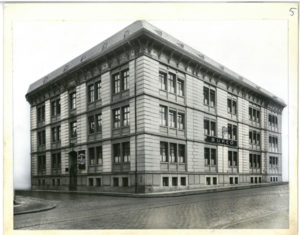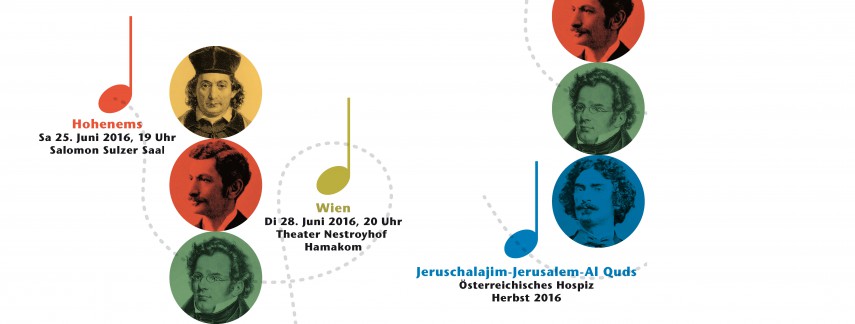
The Departure of the Wanderer
„There, where you are not, lies happiness” sings the Wanderer in Schubert’s probably most famous song based on a poem by G.P. Schmidt von Lübeck. The „Wanderer“ was a major motive of the romantic period. Time and again the image of a the restless wayfarer, who remains a stranger wherever he wanders, recurs in Schubert’s œuvre. This alone could have been reason enough to give our program, planned to tour from Hohenems, a town known for hosting the international Schubertiade Festival, to Schubert’s birthplace Vienna and from there to Jerusalem, the title „Die Wanderer“. But there is a lot more to our story of „Die Wanderer“.
Schubert’s friend, the celebrated Hohenems born cantor Salomon Sulzer who was gifted with a legendary baritone voice, performed many of Schubert’s creations. According to Ludwig August Frankl, a writer of the time, Schubert asked Salomon Sulzer to sing his ‘Wanderer’ song and he must have done this so beautifully that Schubert begged him to repeat the piece several times declaring that only now he finally understood his own music and what he felt when he wrote it.
But Salomon Sulzer, the famous chief cantor of Vienna, was not only admired for his vocal performance which attracted people from all over the world to travel to Vienna only to hear him, he also happened to be a highly skilled composer himself. While he is recognized as one of the most important composers and arrangers of synagogal music, his secular compositions are nearly forgotten today. Among his many creations is his „Wandererlied“ which we decided to use as an overture to our concert program.
An Ensemble United in Diversity
Nowadays it is normal in the daily music business, that musicians from different corners of the world work together in one project. The language of music is international, and every single artist working on a professional level will soon find himself in ensembles of different nationalities, languages and cultural backgrounds. This is the world of music and for the future richness of the arts we may all hope that this openness and diversity will remain forever.
Nevertheless, even in today’s boundless music scene, you will find it hard to attend an event including Israeli and Palestinian artists. I do not want to immerse in politics, as this is not the place to discuss the reasons. But the many fears and legal obstacles sadly hinder many Israeli-Palestinian collaborations, even on artistic neutral grounds. The luckier we felt that for this project, starting in Hohenems, it was possible to bring together artists from Canada, Finland, Austria, Germany as well as from Israel and Palestine. A group of former strangers, wandering from now on together to present to its audience the works of Franz Schubert, Salomon Sulzer, Joseph and Julius Sulzer.
Joseph and Julius were sons of Salomon Sulzer, both of them accomplished composers themselves and their pieces felt like such precious, interesting and beautiful discoveries that we could not resist adding them to our program.
Our performances at the Salomon Sulzer Auditorium in Hohenems, the Hamakom Theatre in Vienna and at the Imperial Salon of the Austrian Hospice in the very heart of Jerusalem’s Old City where received by an audience full of curiosity and enthusiasm. We didn’t know how people would react to a program which was so unconventional, if not to say daring, building bridges between classic romantic Viennese and traditional Jewish and Palestinian creations presented by an ensemble reflecting this diversity, being at the same time united by a professional musical approach and the will to give birth to a sparkling musical solitaire.
The many administrative and organizational barriers were finally worth everything when hearing comments like „This was unforgettable“, „what a special evening“, „what a discovery“ and reading reactions of audience members about how moved they were, waiting for more concerts to follow.
Jerusalem
Jerusalem was in every respect the big final of our Wanderer tour. The Old City has an ambiance that is difficult to define. A friend of mine once said, this city offers you heaven and hell, more often the latter, but in the end, it is the salt and pepper of life. What would Jerusalem offer to us?
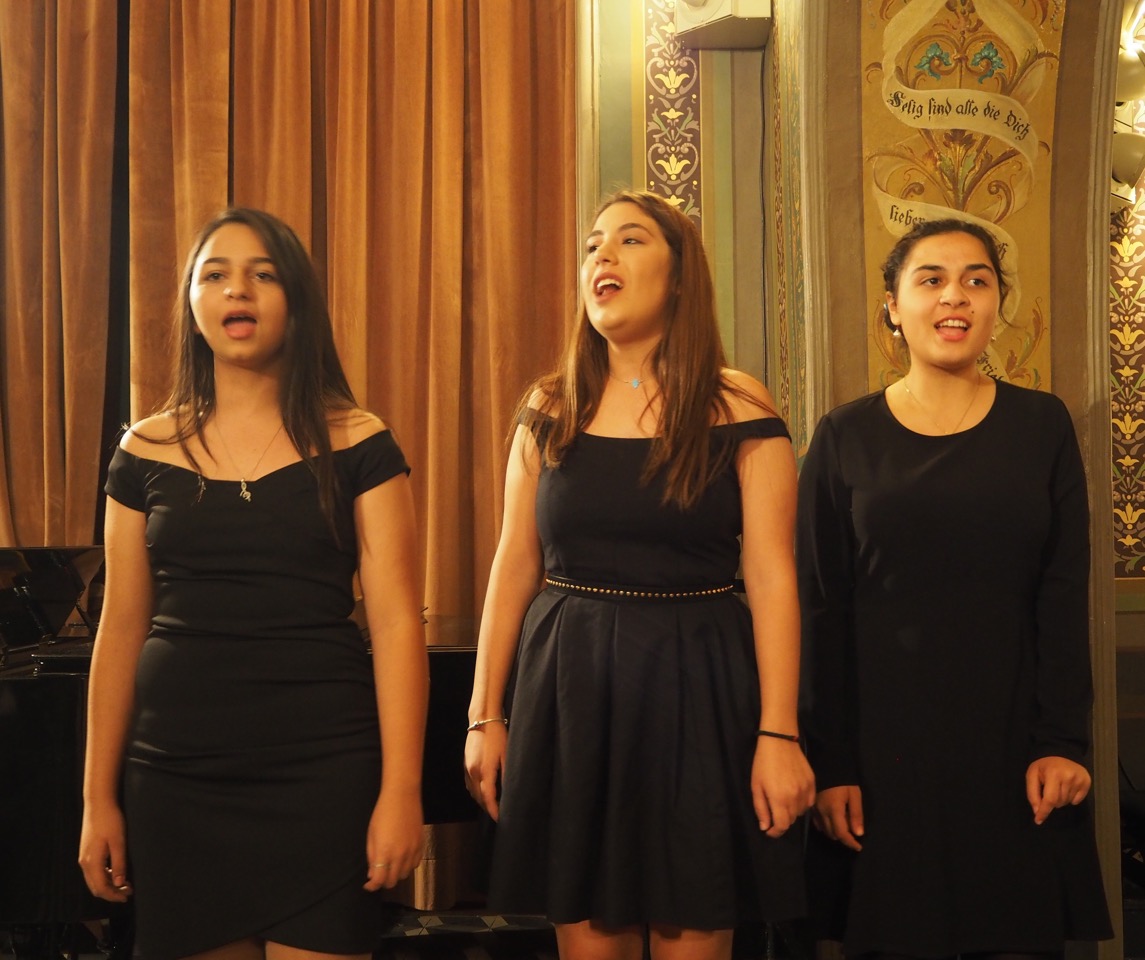
Our ensemble was hosted in the gracious historical setting of the Austrian Hospice situated on the Via Dolorosa, only a few steps from the Dome of the Rock, the Western Wall and the Church of the Holy Sepulcher. The Austrian Hospice of the Holy Family in Jerusalem opened its doors in 1863 during the Habsburg monarchy as the first national pilgrim’s residence in Jerusalem when pilgrimages to the Holy Land were undertaken by Catholic clergymen and orient travelers imbued with the spirit of Romanticism. We couldn’t have dreamed of a more suitable and atmospheric location for our last concert. At the same time, the Old City brings a certain unpredictability with it.
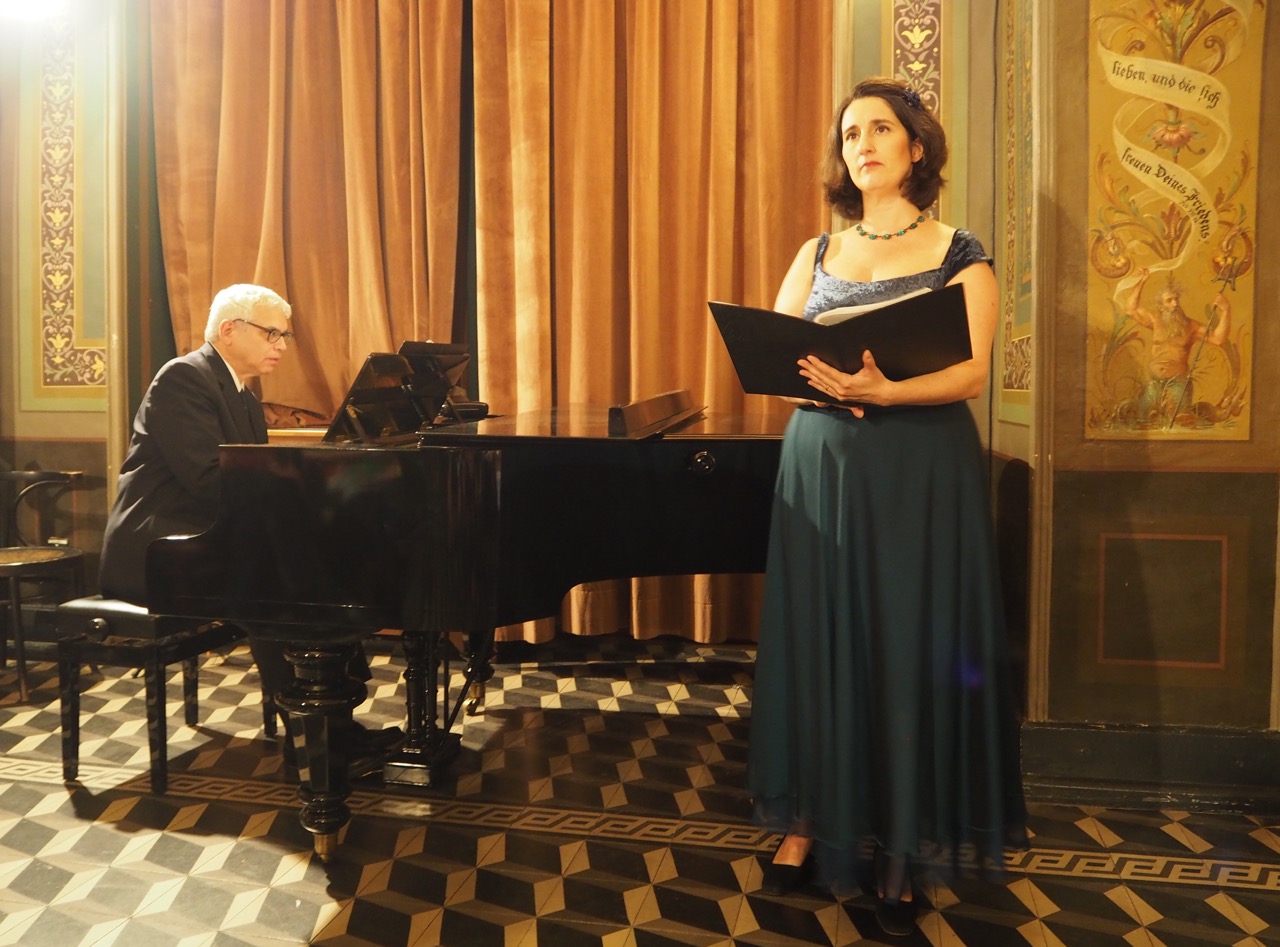
Also we had to ask ourselves, will we be welcomed or will people dislike the fact that our ensemble consists of European, Canadian, Israeli and Palestinian artists? In Europe we are able to look at the Middle Eastern conflict with a certain distance. Our young Palestinian singers had to face a tremendous amount of bureaucratic requests during their visa process and spent hours in security checks at the airport but then, as soon as we all arrived in Hohenems, we had the luxury to focus fully on the music. Here in the center of Jerusalem, the situation is different. People here live the conflict and, especially in the Old City, they are effected by it every single day of their life.
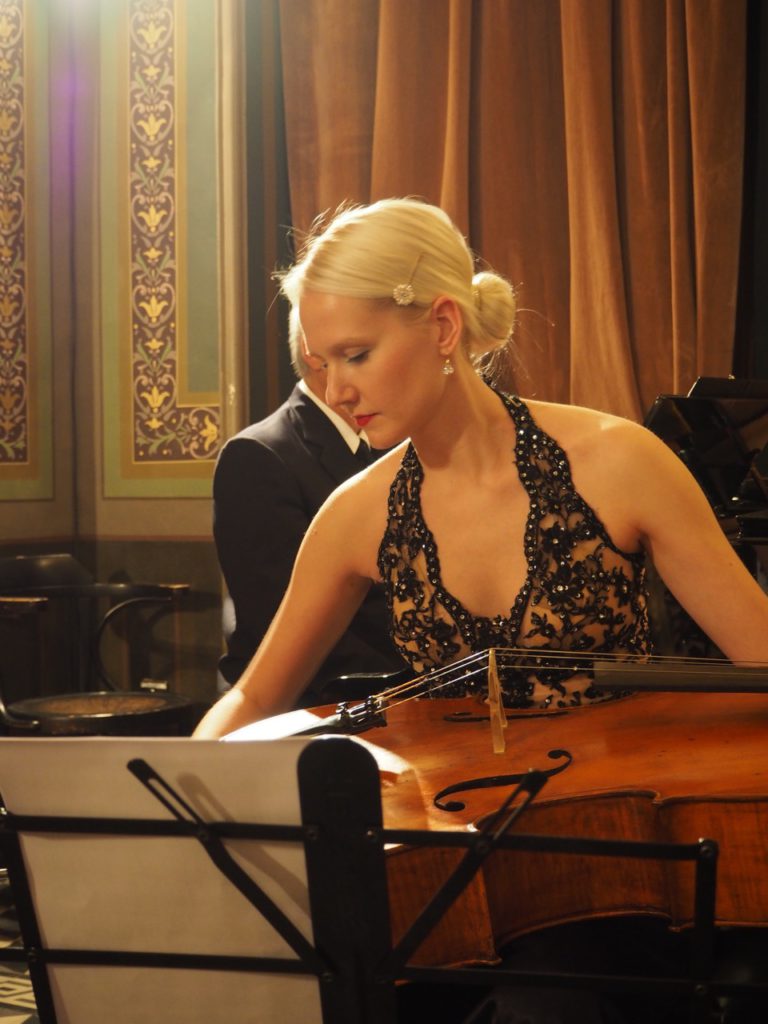
Due to experiences with former cultural projects in the region I couldn’t help myself but worry if there might be a prostest or some other problem arising from one side or the other at the last moment. There was in fact one impediment, although not related to the project: The Russian prime minister Dmitri Medwedew visited Jerusalem on the very day of our concert thus the Israeli police decided to block basically all roads that would lead to the Old City. Several of our expected guests got stuck in traffic jams and didn’t make it to the concert. The road blocks weren’t announced, another proof of Jerusalem’s unpredictability.
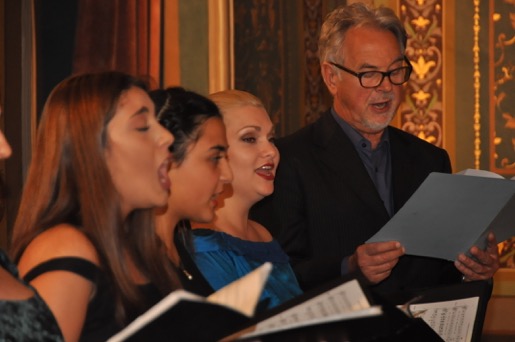
But once our pianists’ hands were set on the beautiful old Bösendorfer grand piano and our singers raised their voices in the venerable Imperial Salon, all worries and sorrows vanished in the melodies of Franz Schubert, Salomon Sulzer and his sons.
For us it was more than a project. More than a musical concept. And this is why we hope that our story will not end in Jerusalem. Because wherever he is, a true „Wanderer“ will never stop searching for happiness. After this project and all the unforgettable encounters we experienced together in Hohenems, Vienna and Jerusalem I wonder, don’t we all have a bit of a Wanderer in our hearts?
The Wanderer keeps traveling from land to land and – hopefully – so will the spirit of this unique project. So let us end with a quote from Sulzer’s Wanderer-song: „Beat happy my heart, be joyful and free, the world is big and wide!“

